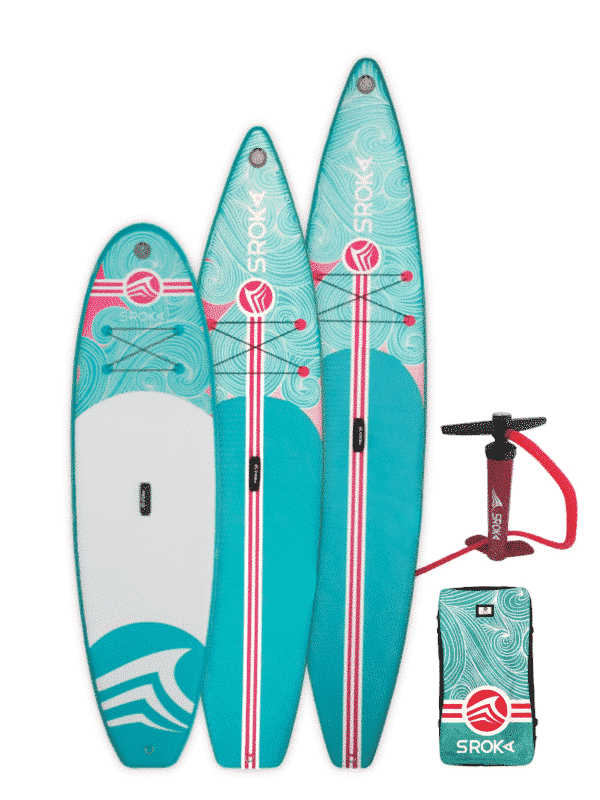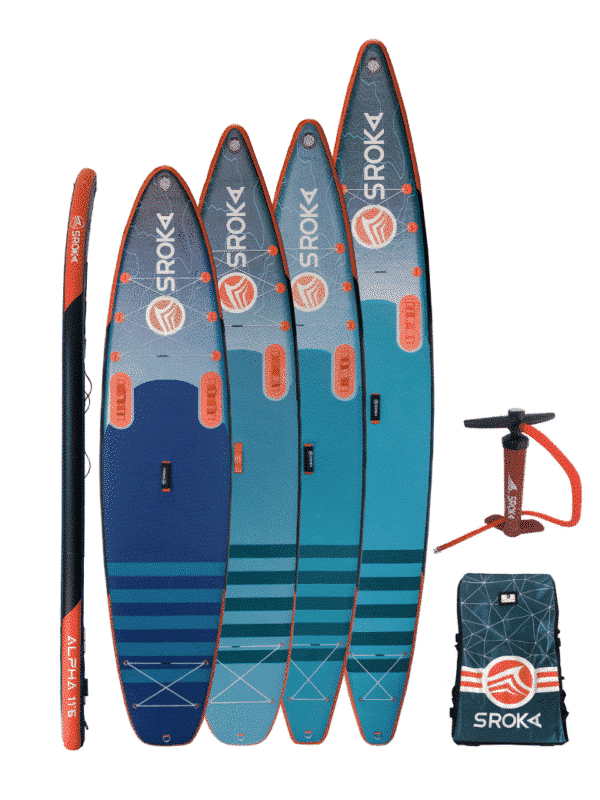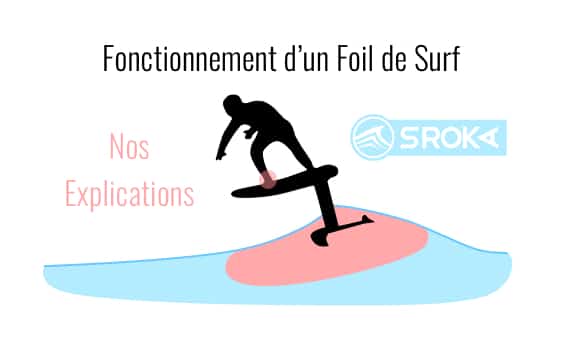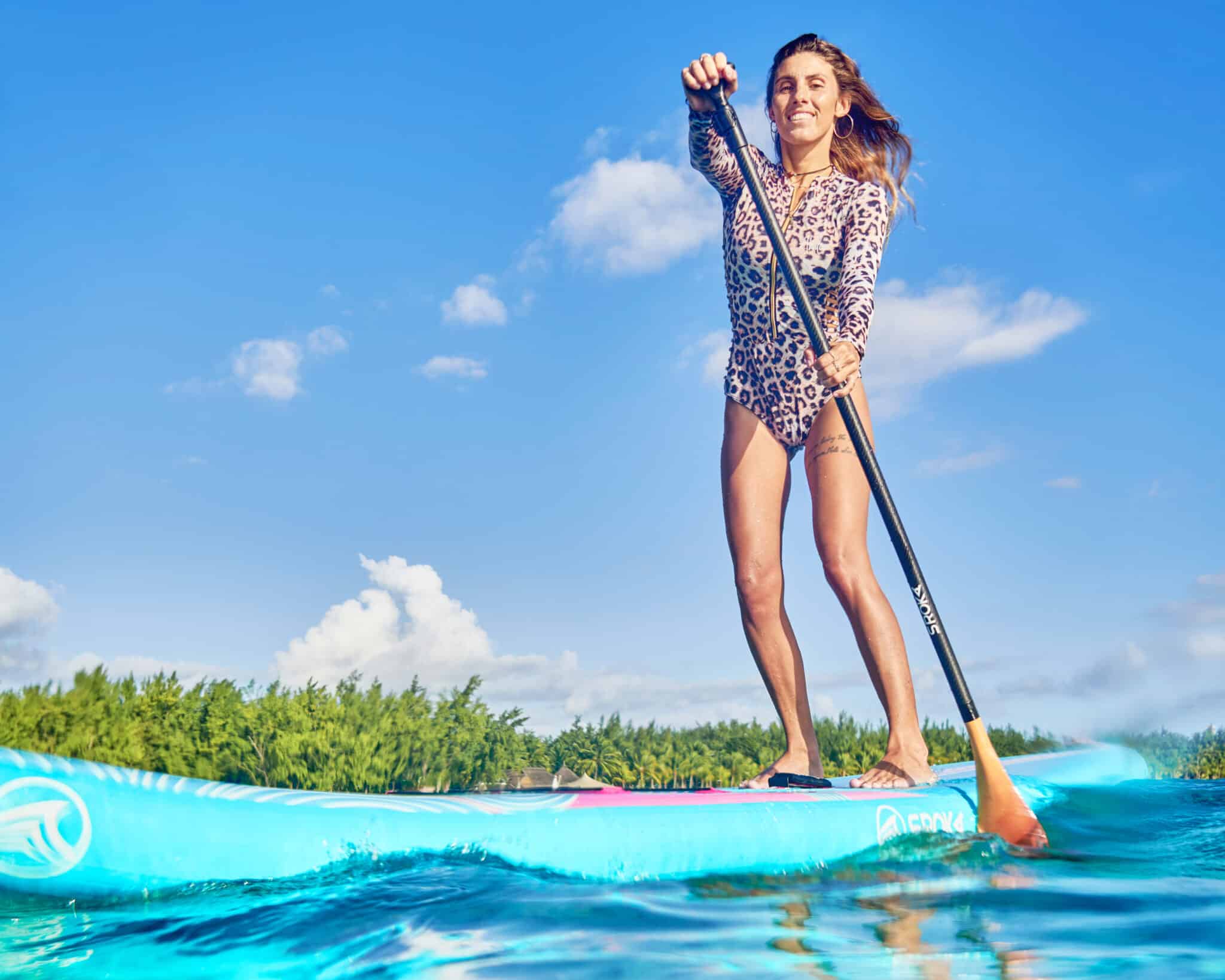Louis-Arnaud surf-foil in Mauritius, equipped with the Fast Flyer 4’6 board and the High Aspect 1190 Lift S-foil Summary Composition of a surf foil Principles …
Inflatable or rigid paddle board? What are the differences?
Whether it’s for a first purchase, for a gift or simply because you want a change, it is sometimes difficult to choose your stand up paddle. There are many offers and so are their features.
You’re probably wondering what would be the better choice between an inflatable paddle board and a rigid paddle board and what their differences really are. Both have advantages and disadvantages, here is a comparison to help you choose your SROKA stand up paddle.
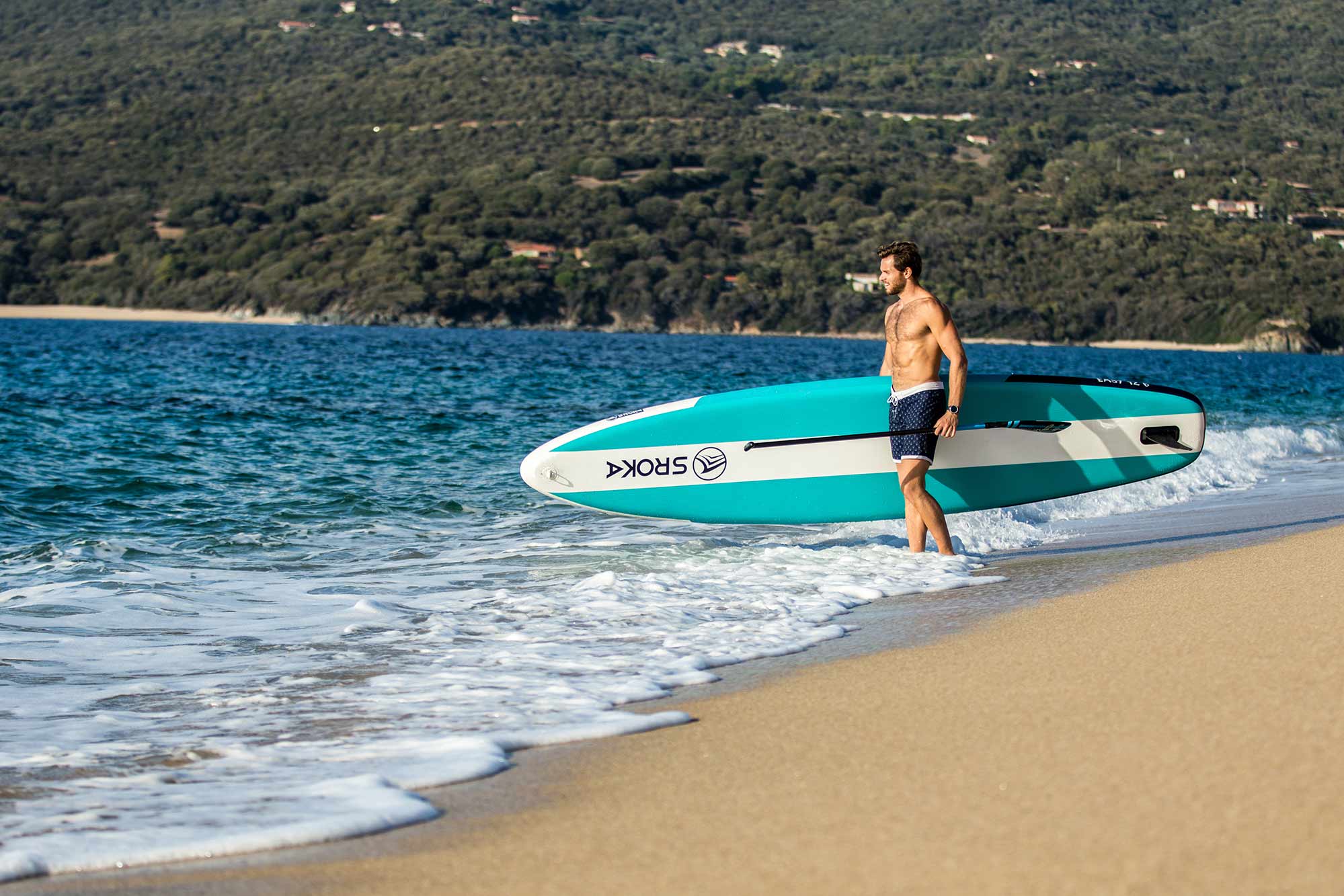
Transport
The first point of comparison, and not the least, is at the level of transport. There’s no doubt about it, carrying an inflatable SUP is much more convenient. This is explained, of course, by the fact that it can deflate and therefore bend. This way, once stored in its carry bag, it’s super easy to bring it to your favorite spots.
Let’s take the case of public transport. It is much easier to take them with your paddle in a backpack than with your board under your arm.
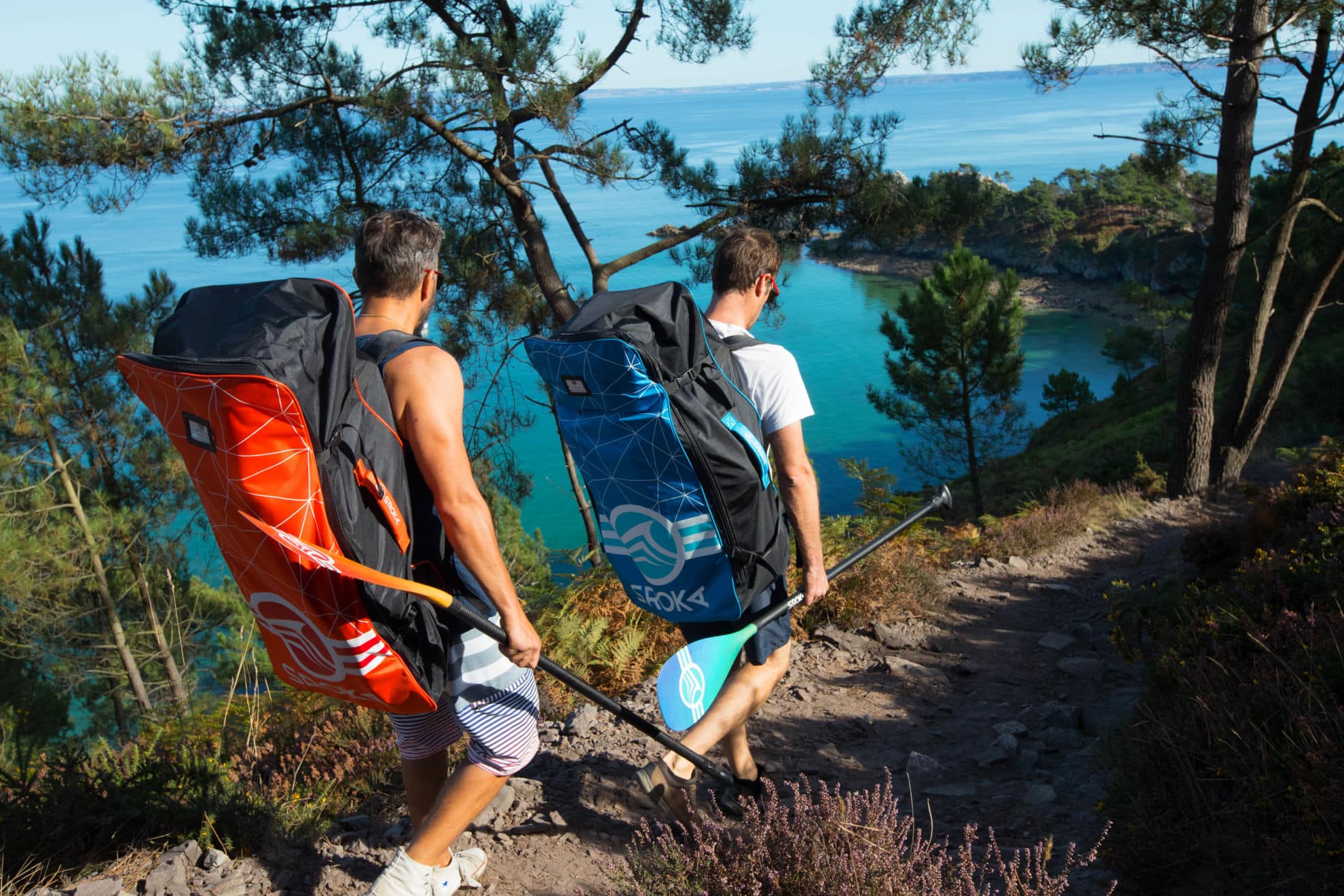
Robustness
Rigid SUPs appear stronger at first glance because of their material. This is not the case, from a solidity point of view, it is the inflatable paddles that win hands down. Inflatable SUPs are not afraid of shocks, unlike rigid SUPs. So don’t panic if he gets hit with a paddle or rubs against a rock.
This solidity can be explained by the construction of SUPs: the materials used, the construction technique, the labor (handmade or not, time spent on the design,…).
At Sroka we build all our paddles with high-end PVC and glue. These are the same materials used for professional RIB boats. In order to ensure the paddles have extra durability, we use fusion technology for the deck and hull. Finally, our paddles have 3 to 4 layers of PVC on the rails (depending on the model) to further reinforce the paddle. Enough to guarantee our SUPs a solidity at all times!

Performance
To begin with, in general, rigid paddles are a little more stable, for the same size, than inflatable paddles. In addition, rigid SUPs will also perform better in the waves. This can be explained by their elaborate shape which gives them more grip. Indeed, on a rigid paddle the rail can be worked (the edges of the board), which is not possible on an inflatable paddle.
As far as gliding is concerned, it is a little better on rigid paddles. However, with a well-constructed inflatable board you can almost match the glide of a rigid board. Let’s say that inflatable paddle boarding offers very high performance in 80% of the practices considered. However, if you want to move towards high-level paddle boarding, rigid SUP is recommended.

Usage
Inflatable paddle boards have the advantage of being easy and practical to use. These are paddles that can be intended for family use. This is because they can be used by all members of the family. One of the big advantages of the inflatable paddle board is its use by children. They can climb on them without any problem, without too much risk of hurting themselves in the event of a fall, unlike a rigid paddle. There is also no need to worry about children damaging the inflatable paddle board thanks to its sturdiness. In addition, during a family outing the car is often well filled, an inflatable paddle will be much easier to fit between belongings.

Storage
As for storage, it obviously depends on how much space you have. It is obvious that with a large garage or shed, you will find a place for your rigid paddle. Nevertheless, from a practical point of view, the inflatable SUP is still much easier to store. Indeed, since it can be stored in a backpack, it does not take up much space. For those who don’t want to bother deflating their paddle after each session, it is possible to store it inflated.

Price
As a general rule, an inflatable stand-up paddle board will be cheaper than a rigid SUP.
Let’s take the case of a high-end paddle: for a rigid paddle it costs around €2,000 while a high-end inflatable paddle is worth between €600 and €999. This is the case of Alpha paddles, top-of-the-range SUPs that offer exceptional gliding performance.
-
Sale!
Women’s Inflatable Paddle Boarding Girly Fusion
335,00€ – 650,00€ Select options This product has multiple variants. The options may be chosen on the product page3 reviews -
Sale!
Alpha Fusion Inflatable Paddle Board
435,00€ – 529,00€ Select options This product has multiple variants. The options may be chosen on the product page10 reviews
In short
There are many differences between an inflatable paddle board and a rigid paddle board. We can still conclude that 80% of the time an inflatable paddle board is the most recommended option. Indeed, it is clear that it is the best option if you want a SUP that does everything (leisure, hiking, afternoons at the beach, yoga..). A good quality inflatable paddle board will undoubtedly offer you very good performance and excellent durability, while remaining at an affordable price. Not to mention the transport and storage which is ultra convenient and easy.
However, if the goal is to compete or achieve great performance in the waves, a high-end rigid SUP will be preferred.
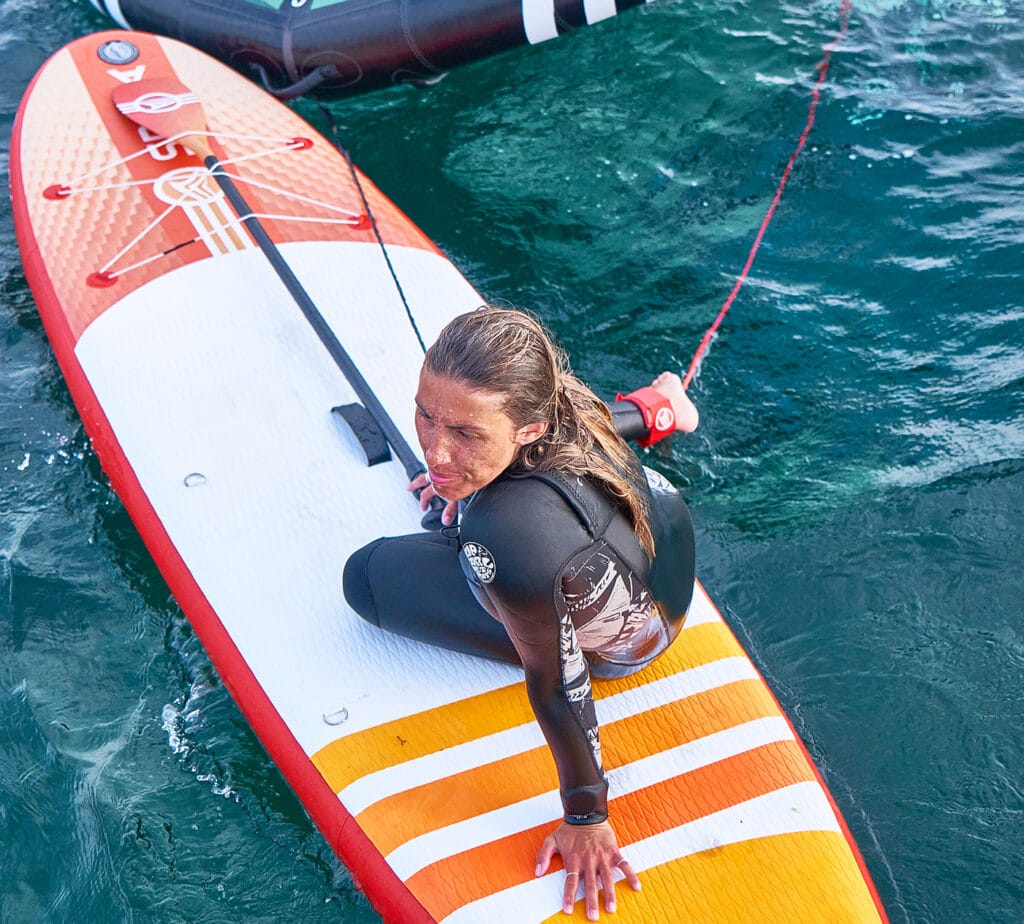
If you still have questions about this, or for any other request, please do not hesitate to contact us !
Article you may be interested in
Did you know that paddle boarding is a great way to strengthen your body? Not only does this activity allow you to escape on the …
Are you looking for an inflatable paddle board for the summer to sail at sea or in lakes? The inflatable paddle board really has a …
What is Wing Foil? Wing Foil is the latest in board sports. This consists of manipulating a wing held with both hands (“wing”) with a …

